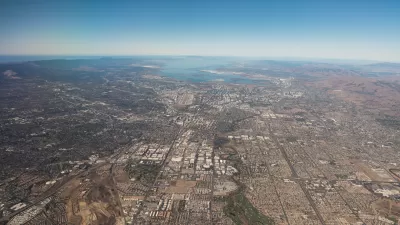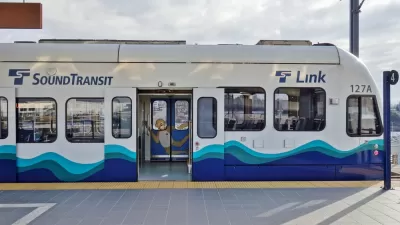Bay Area tech companies are increasingly opening offices in downtown San Francisco, a significant change from the development pattern of the last ten years.
"Autodesk software engineer Hawkeye Parker would have to drive more than 20 miles north, crossing the Golden Gate Bridge into Marin County, if he worked at his company's headquarters in San Rafael, Calif. Instead, 37-year-old Parker takes a seven-minute train from his home in San Francisco's bustling Mission District to the design-software maker's outpost on the city's eastern edge."
"Put simply, San Francisco residents "hate commuting," says Autodesk (ADSK) Chief Executive Carl Bass. The $2 billion-a-year company, which houses 275 of its 7,000 employees at One Market St. in San Francisco, thinks customers prefer the city to the suburbs, too."
"Autodesk is one among a raft of tech companies, including Google (GOOG), Microsoft (MSFT), and newer players like professional networking Web site LinkedIn, striving for that same San Francisco symbiosis. These companies have long occupied suburbs to the south, east, and north of the city. Now they see expansion downtown as a way to attract and retain some of the brightest talent, quicken the travel time to meetings, and impress customers from around the world."
"The move also reflects a larger national trend toward urbanization that's seeing many workers in their twenties and thirties eschew suburbs for hubs like San Francisco, Boston, and Atlanta. While the overall economy is slumping, and industries like banking and auto making are cutting back on staff, tech companies are still hiring and competing for job candidates."
Thanks to Christopher Corbett
FULL STORY: I Left My Staff in San Francisco

Study: Maui’s Plan to Convert Vacation Rentals to Long-Term Housing Could Cause Nearly $1 Billion Economic Loss
The plan would reduce visitor accommodation by 25,% resulting in 1,900 jobs lost.

North Texas Transit Leaders Tout Benefits of TOD for Growing Region
At a summit focused on transit-oriented development, policymakers discussed how North Texas’ expanded light rail system can serve as a tool for economic growth.

Why Should We Subsidize Public Transportation?
Many public transit agencies face financial stress due to rising costs, declining fare revenue, and declining subsidies. Transit advocates must provide a strong business case for increasing public transit funding.

How to Make US Trains Faster
Changes to boarding platforms and a switch to electric trains could improve U.S. passenger rail service without the added cost of high-speed rail.

Columbia’s Revitalized ‘Loop’ Is a Hub for Local Entrepreneurs
A focus on small businesses is helping a commercial corridor in Columbia, Missouri thrive.

Invasive Insect Threatens Minnesota’s Ash Forests
The Emerald Ash Borer is a rapidly spreading invasive pest threatening Minnesota’s ash trees, and homeowners are encouraged to plant diverse replacement species, avoid moving ash firewood, and monitor for signs of infestation.
Urban Design for Planners 1: Software Tools
This six-course series explores essential urban design concepts using open source software and equips planners with the tools they need to participate fully in the urban design process.
Planning for Universal Design
Learn the tools for implementing Universal Design in planning regulations.
City of Santa Clarita
Ascent Environmental
Institute for Housing and Urban Development Studies (IHS)
City of Grandview
Harvard GSD Executive Education
Toledo-Lucas County Plan Commissions
Salt Lake City
NYU Wagner Graduate School of Public Service





























